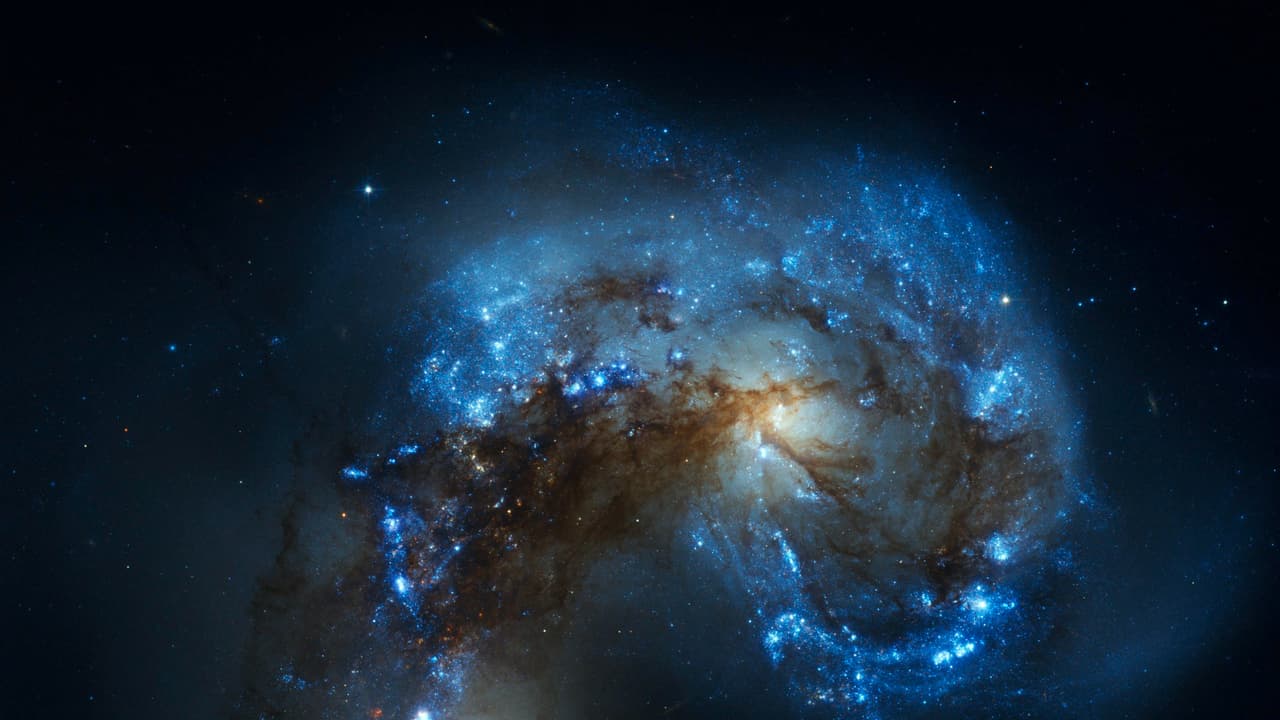Astronomers using ALMA uncovered cosmic gas “highways” that fuel massive stars. These streamers funnel matter efficiently, overcoming stellar winds and radiation, revealing a new mechanism of star formation beyond traditional accretion disks.
Gas Highways Feed Stars
Astronomers uncover vast gas streamers, or “cosmic highways,” that funnel matter into young massive stars, fueling rapid growth despite stellar winds.
For decades, astronomers have puzzled over a cosmic riddle: how do the largest stars in our universe grow so massive, so quickly? Stars that are more than eight times heavier than our Sun shine with such powerful radiation and winds that, in theory, they should push away the very gas and dust they need to survive. Yet somehow, they continue to bulk up into the true giants of the cosmos.
A new study led by Kyoto University and the University of Tokyo is beginning to answer this mystery. Using the Atacama Large Millimeter/submillimeter Array (ALMA) in Chile, researchers captured an unprecedentedly detailed look at a stellar nursery. What they found points to an alternative to the well-known “accretion disk” model: vast, unseen gas streams—nicknamed “cosmic highways”—that appear to funnel enormous amounts of matter into young stars.
The giant’s dilemma
When stars are born, they typically grow by pulling in material from surrounding clouds of gas and dust. In low-mass stars, like our Sun, this process is supported by the formation of accretion disks—rotating structures of gas that steadily feed the star. But in high-mass stars, the story is far less straightforward. Their intense energy output should be enough to blow material away, preventing them from reaching the enormous sizes that astronomers observe across the galaxy.
“Something must be delivering material to these stars faster than feedback can expel it,” explained lead researcher Fernando Olguin.
The role of gas streamers
ALMA’s high-resolution observations revealed massive, elongated flows of gas—called streamers—feeding into a young protostar. These streamers stretch across thousands of astronomical units, channeling material inward with such efficiency that they can overwhelm the powerful stellar winds. In at least one case, the team observed a streamer connecting directly to the dense central region surrounding the star, showing clear signs of both rotation and inward motion.
This mechanism suggests that even without a large disk, stars can continue to gather the mass needed to grow into giants. The finding challenges earlier assumptions that massive disks were the only way to feed high-mass stars.
Surprises in the data
The team expected to see a prominent dust disk several hundred astronomical units wide. Instead, the supposed “disk” appeared extremely small—or perhaps not present at all. Instead, the spiral-like streamers took center stage, delivering matter on a scale that dwarfs traditional star-feeding processes.
“This was a surprise,” said Olguin. “It shows that streamers alone may play a dominant role in sustaining stellar growth.”
The discovery opens a new window into how the most massive stars in the universe form. Researchers now plan to study other stellar nurseries to determine whether gas streamers are a common feature in star formation or if this system is unusual. Future work will also zoom in on the regions closest to young stars, to confirm whether small disks coexist with these colossal gas highways.
For now, the findings suggest that the universe’s largest stars owe their existence not just to the quiet feeding of disks, but to dramatic, large-scale rivers of gas—hidden highways that keep the cosmic giants growing.
